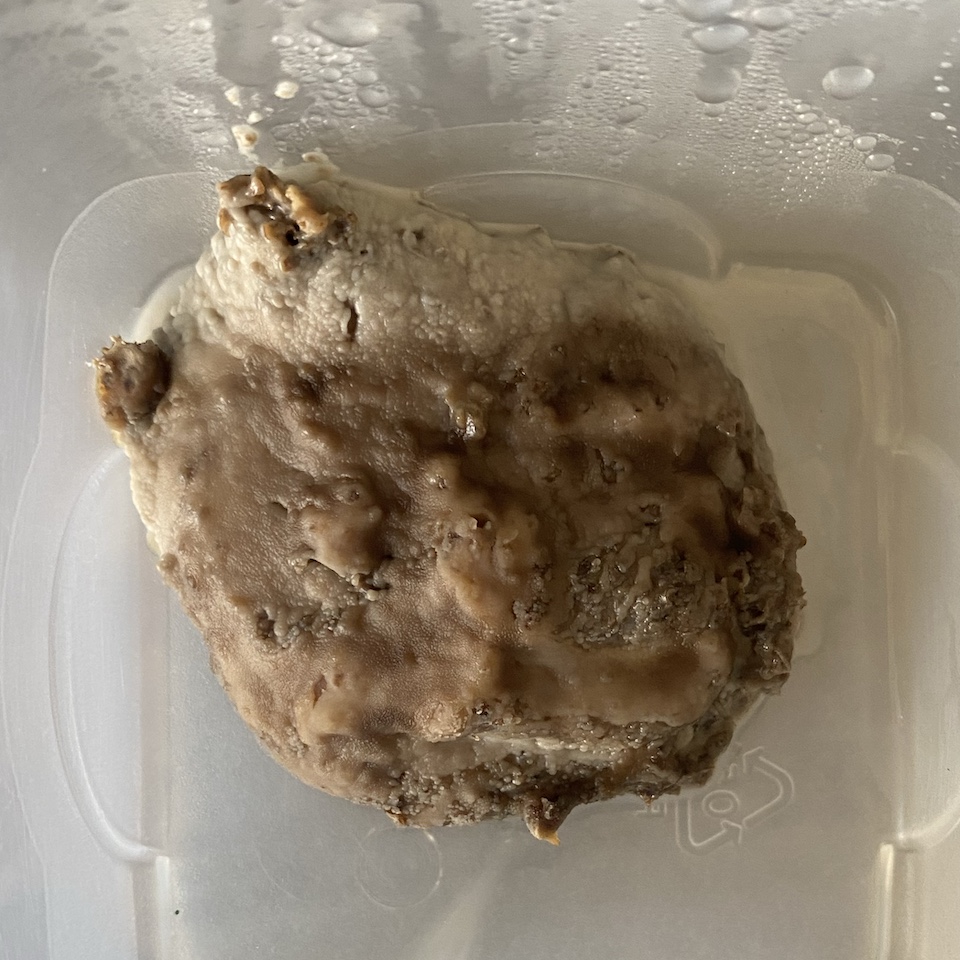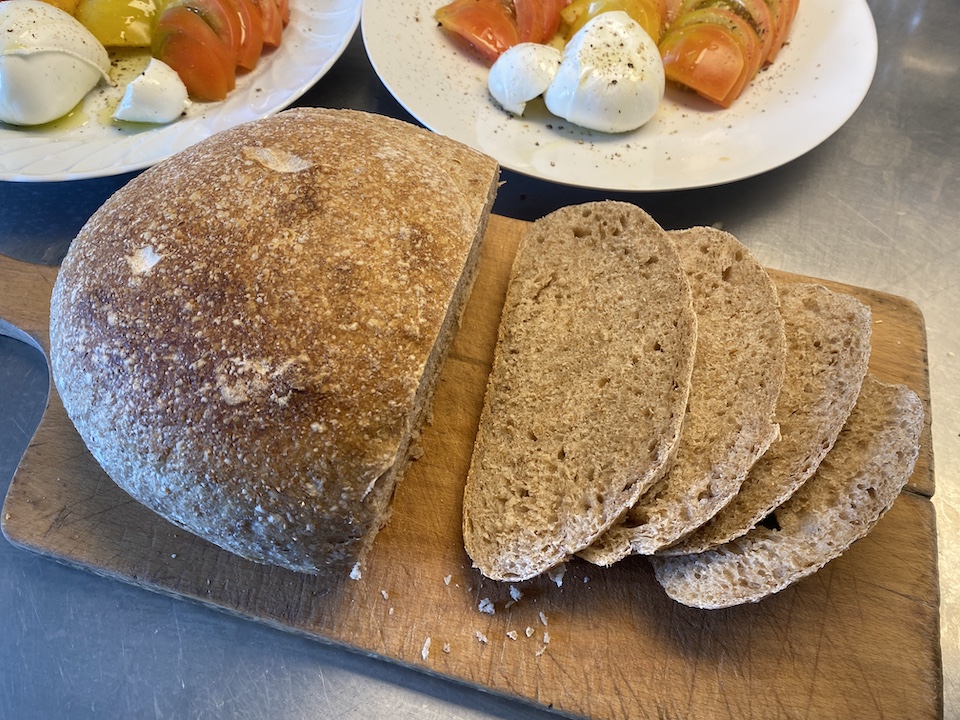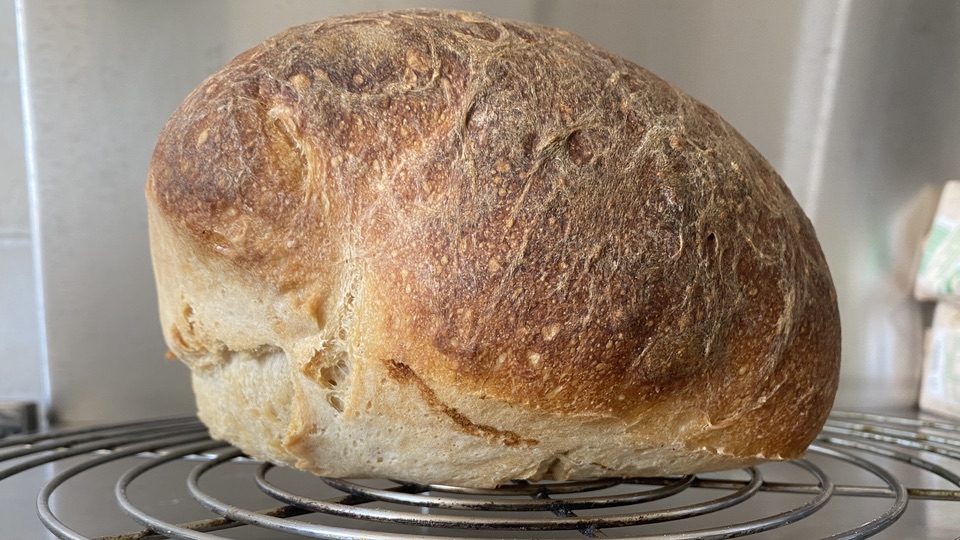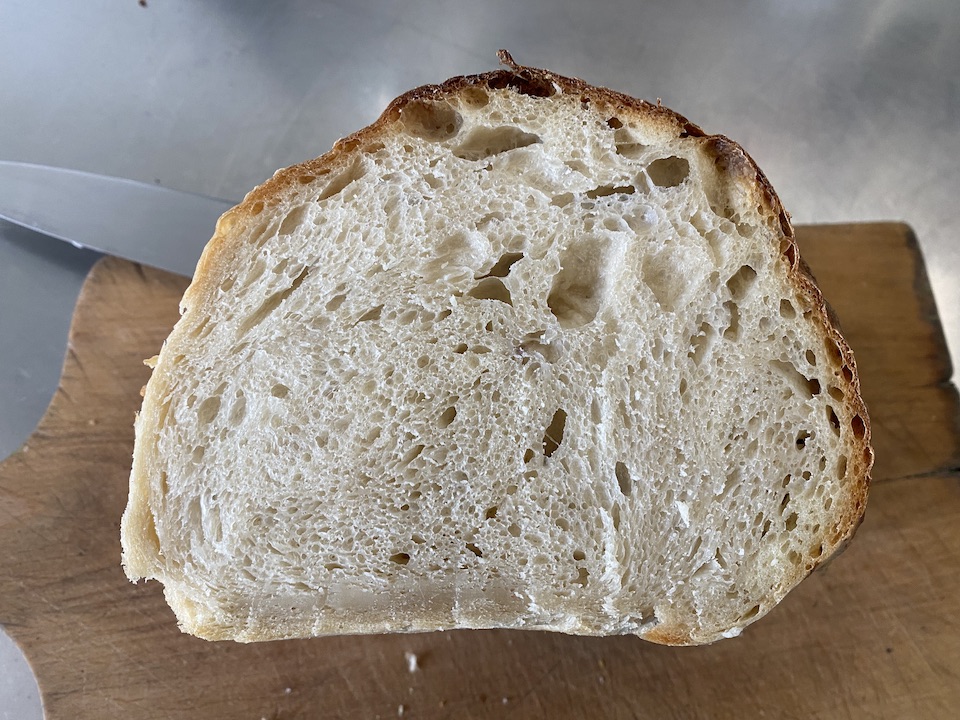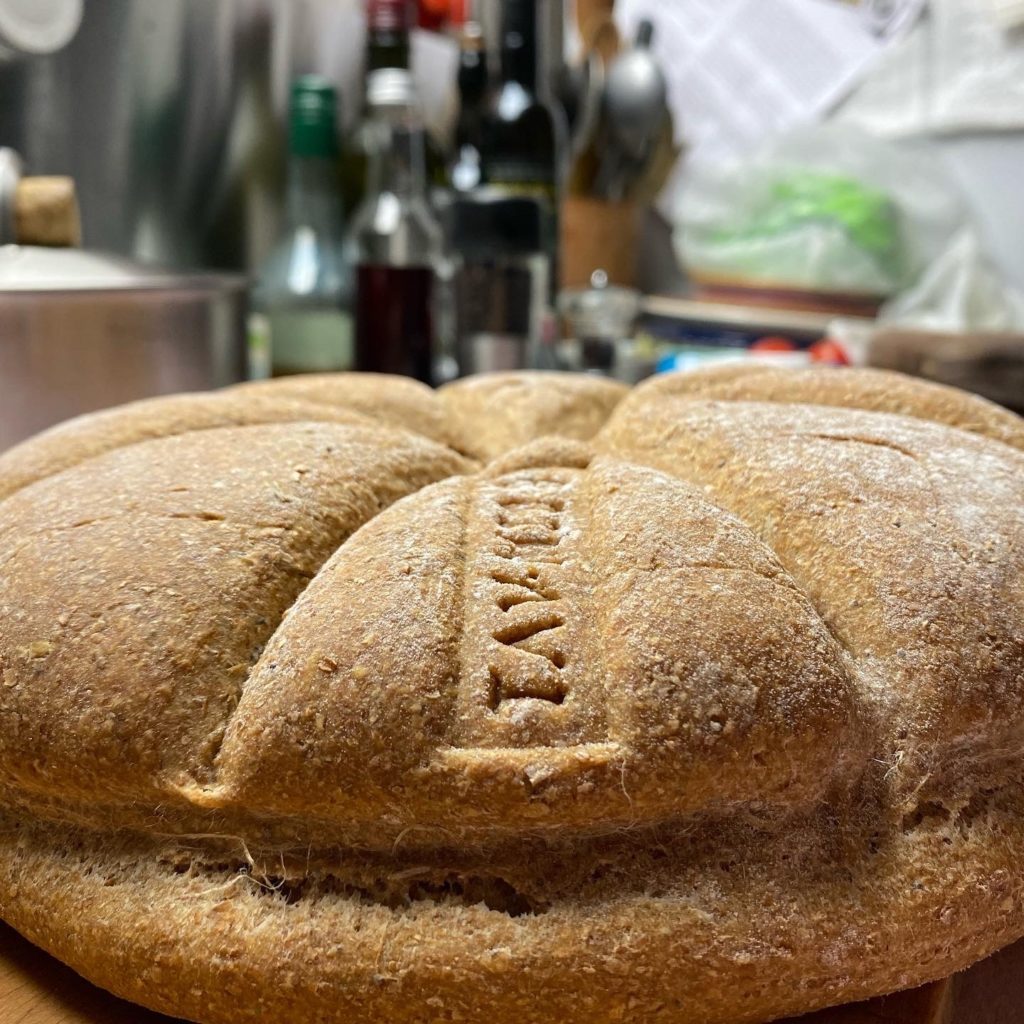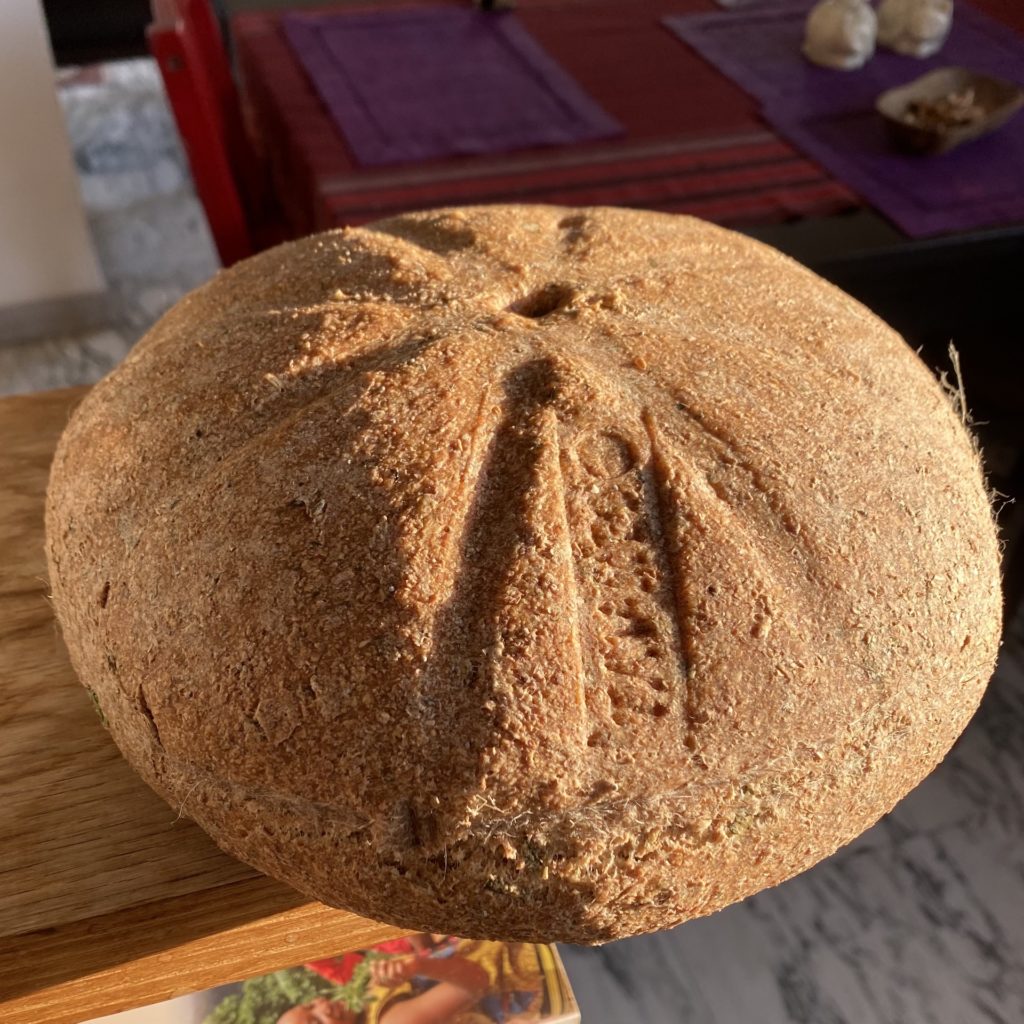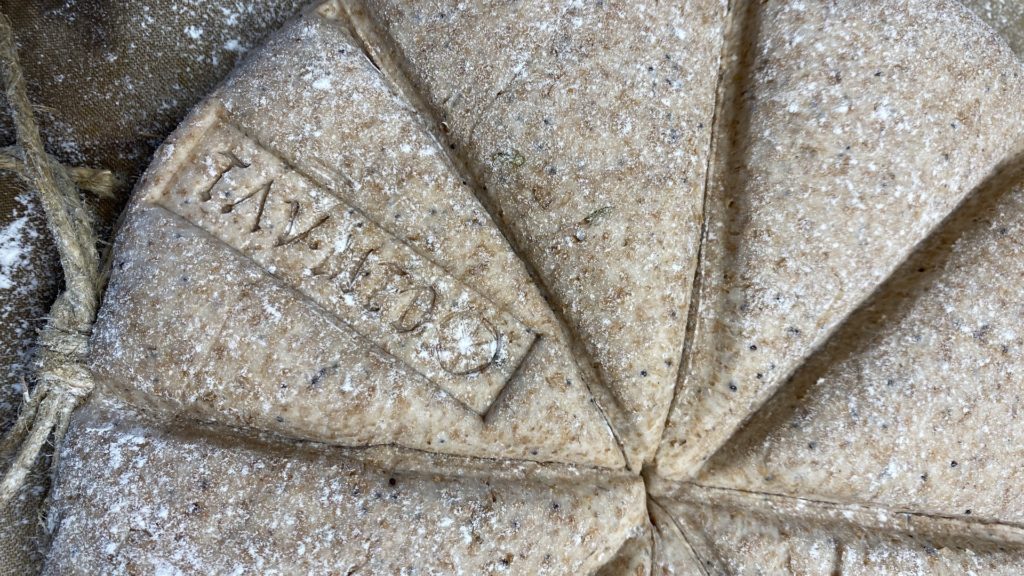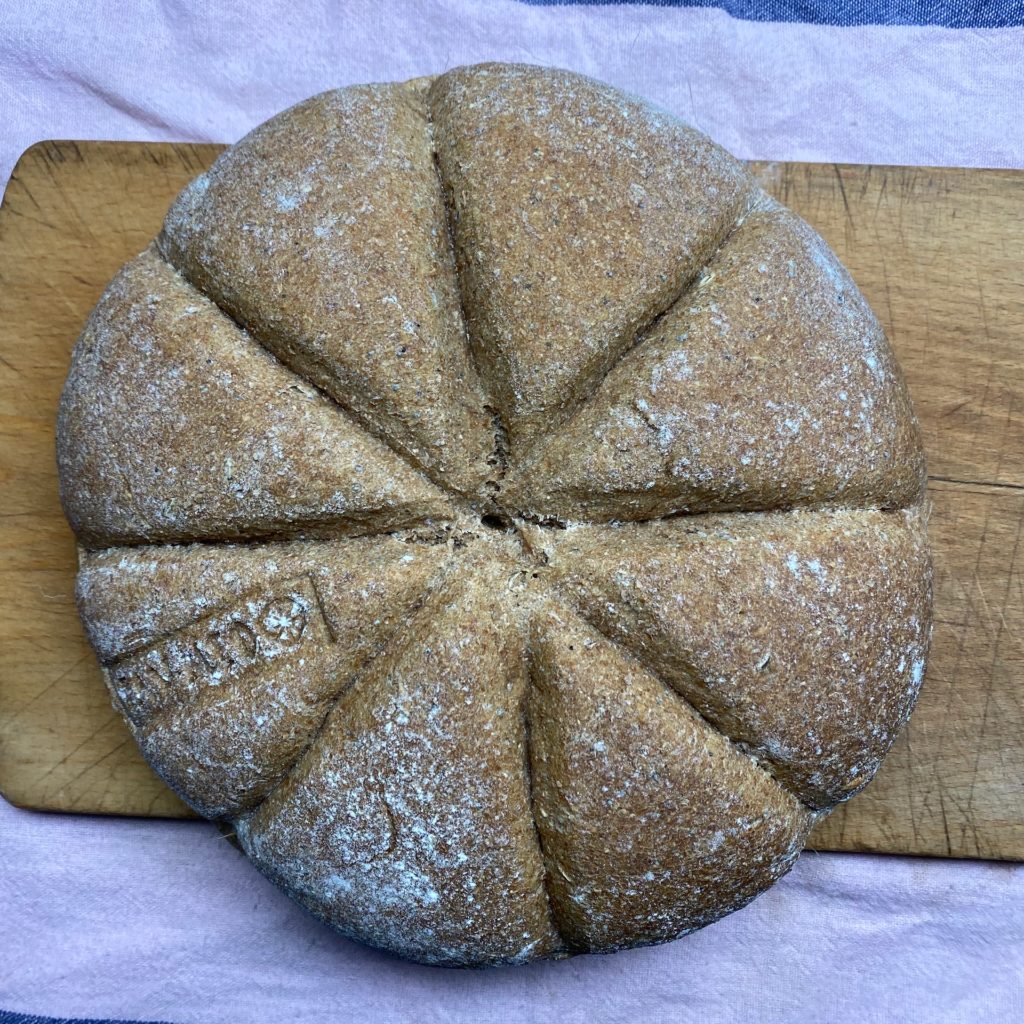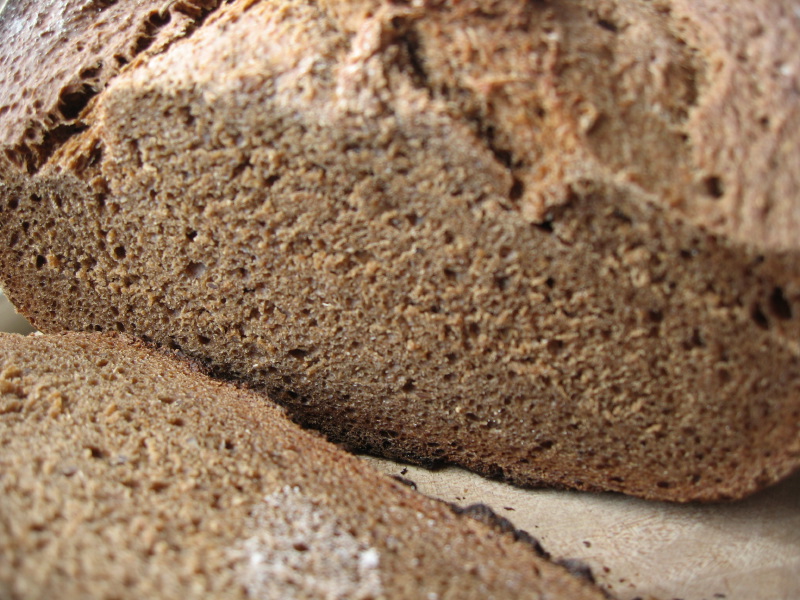Around this time, as is customary, my little microbial helpers need a dash of tender loving care. The yoghurt has already had two quick passages and is much the better for it. The kefir is about to have its first. But with temperatures in the high 30s°C I wasn’t super keen to look after the bread starters. Of course I could have just refreshed them without actually baking, but where’s the fun in that, and in any case stocks of frozen bread were dwindling fast. So, yesterday I took a look at the stiffer starter.
It wasn’t good.
The top was dark and slimy, the driest parts powdery (with spores?) and a fair bit of liquid hooch. The smell wasn’t reassurring either. But I’m here to reassure you that all was well and that if you are ever faced with a neglected starter, there’s no need to abandon it.
Turning the lump over, the base was perfectly fine, so I dug out a small spoonful, trying not to break through to the other side. It weighed about 9 gm. I added 24 gm of water and 32 gm of wholewheat flour (preserving the 75% hydration) mixed it up and left it to get going.
One thing about the heat; it got going in a hurry. Three hours later it was light and well aerated. Time for a second build. A single loaf needs only 175 gm of starter, and there was no way I was going to bake two in this heat, so the feed was 75 gm of water and 100 gm of flour.
Again, three hours was about all it took to more than double in volume. After that, I made the bulk dough (50% Manitoba, 50% wholewheat, 2% salt, 70% hydration), gave it a quick knead and left it on the counter for an hour. One set of folds and into the fridge overnight.
This morning I took it out, nicely risen, gently shaped it, placed it in a banneton, and left it for about 90 minutes. Normally I preheat the oven and my Le Creuset casserole for 35 minutes before baking. Given the heat, no way. It has been a long time since I first tried baking from a cold start and only a couple of times since, but saving 35 minutes of oven blasting made it worth it. Lid removed after 30 minutes, baked for a further 20 minutes.
The result was very acceptable. Not as much oven spring perhaps, but plenty, and a nice, even crumb. If this weather keeps up, I will do the same sort of bake when I revive the looser starter.
